Egypt
Survival
Name the three Mesopotamian cultures we discussed in class (in chronological order):
1. Sumerian
2. Akkadian
3. Assyrian
Name & period
Which "side" is shown in the following image?
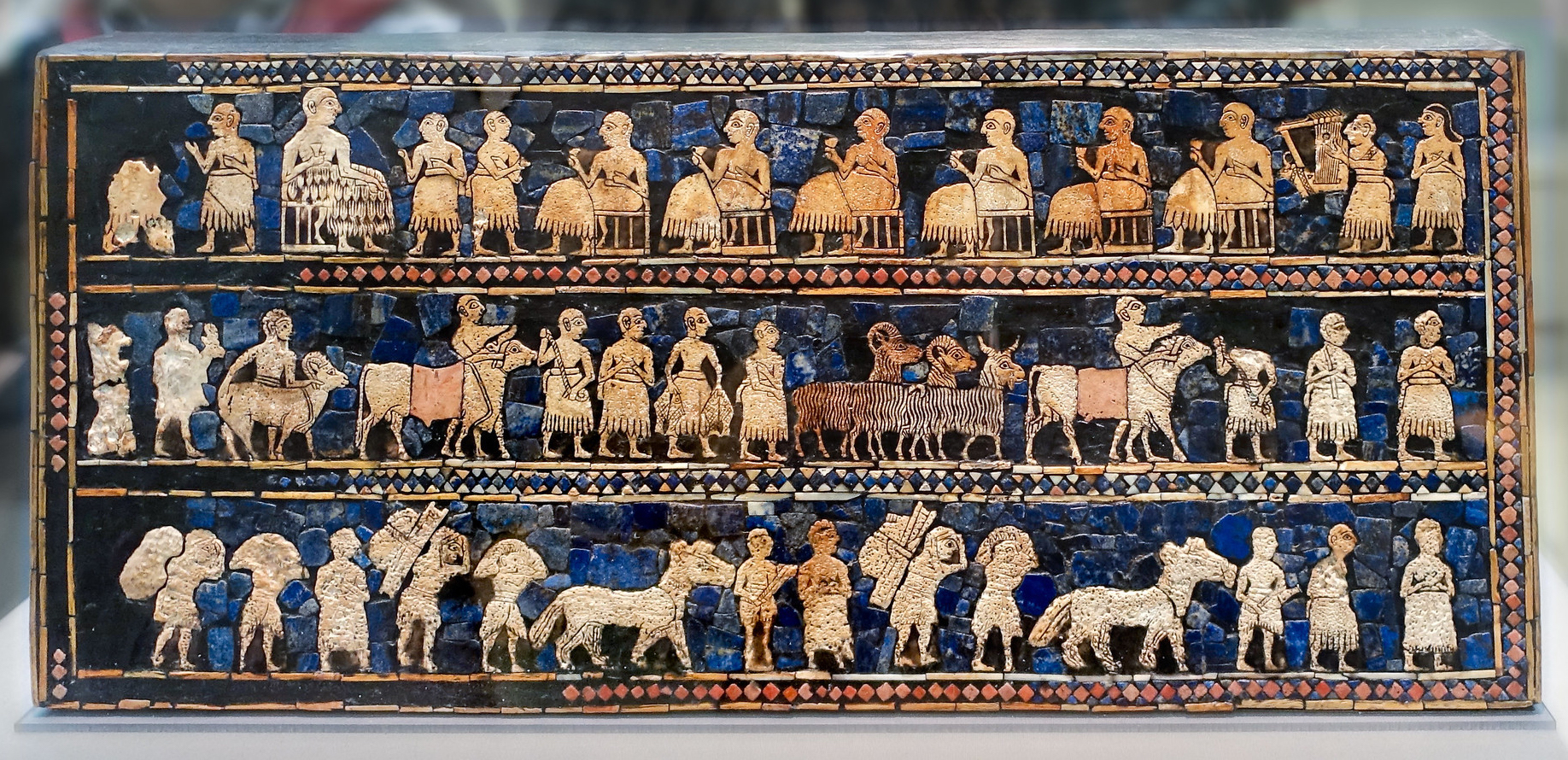
Standard of Ur, Sumerian
Peace side
What is the expression on the sculpture below called?

"Archaic smile"
Where in Athens is the Parthenon located and what does the name of this location mean?
The Acropolis!
"highest point of the city"
Where do we see the presence of humans in the following image:
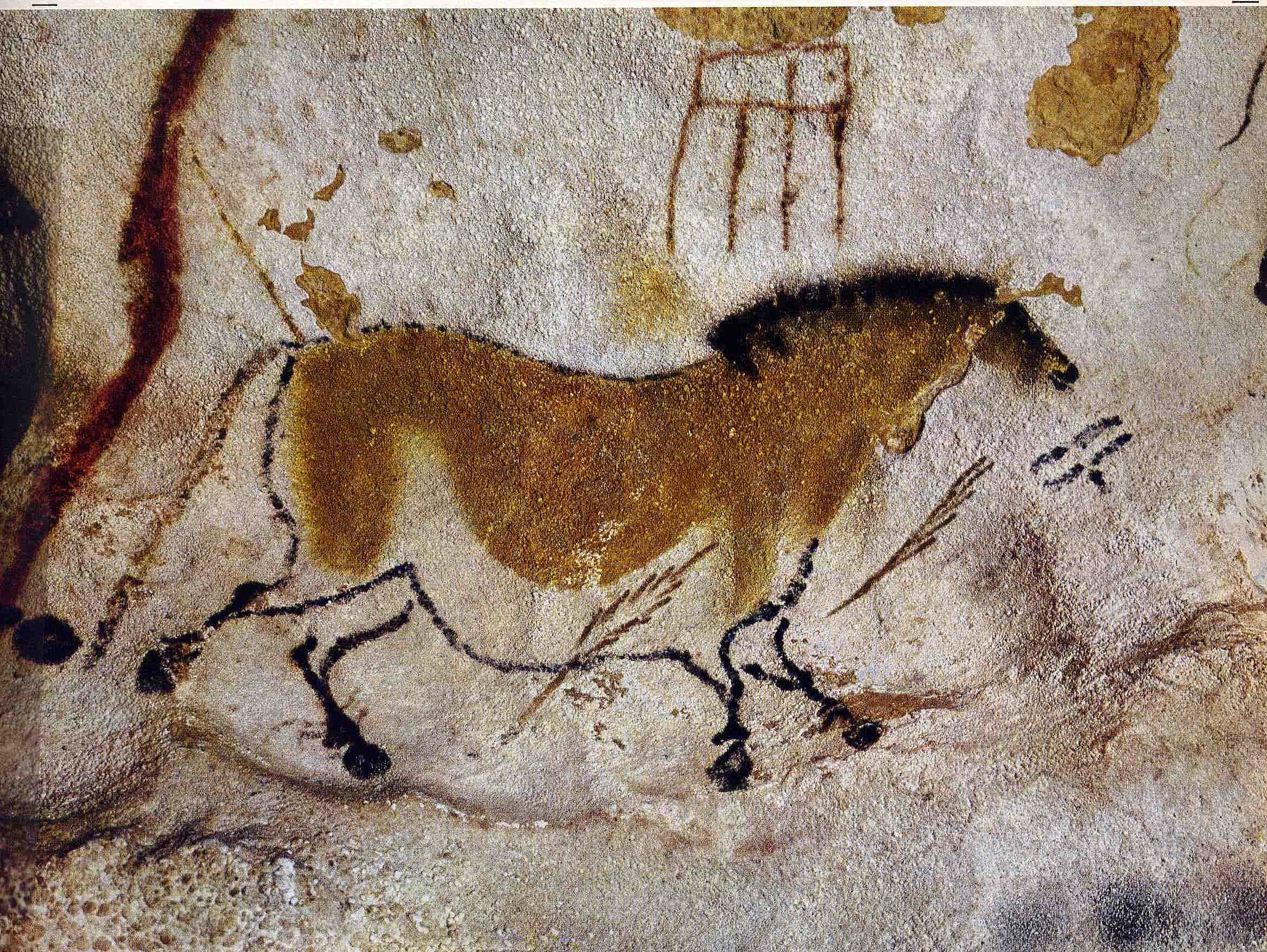
Arrows visible!
Name & Period
WHO is the most important person in the following image and how do we know?
Victory Stele of Naram-Sin, Akkadian
Hierarchy of Scale and Placement!
The most important person is the BIGGEST and the HIGHEST (closest to the gods)
What term best describes the way that Pharaohs wanted to be portrayed during the Old Kingdom period?
Idealized kingship
True or False
Classical sculptures are rigid, frontal, and static.
FALSE
Classical sculptures are more natural, defined by innovative contrapposto. Archaic sculptures are rigid, frontal, and static.
What type of columns are in the image below?
:max_bytes(150000):strip_icc()/column-corinthean-157192255-crop-592f4e7b5f9b585950332bc6.jpg)
Corinthian!
The Venus of Willendorf is...
A. A depiction of Paleolithic beauty standards
B. A sculpture representing fertility
C. A sculpture representing Aphrodite
B
Name & Period
What is the term used to describe the purpose of the following sculpture: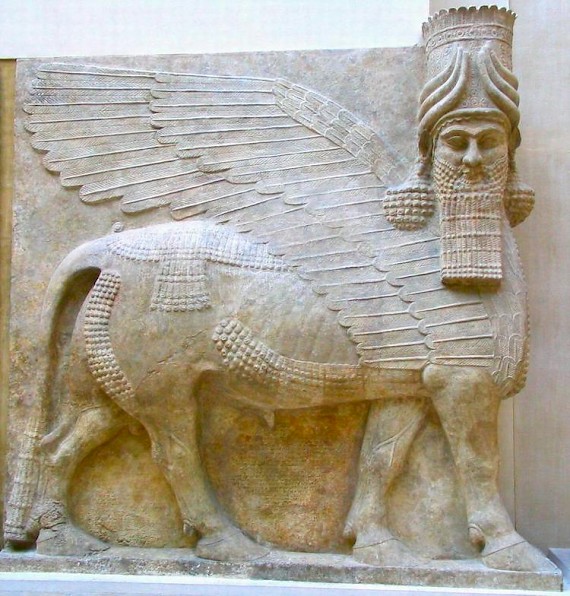
Lamassu, Assyrian
Apotropaic: to ward off evil
Name & period
Name the three pieces of iconography we discussed in class AND explain what these three pieces of iconography represent:
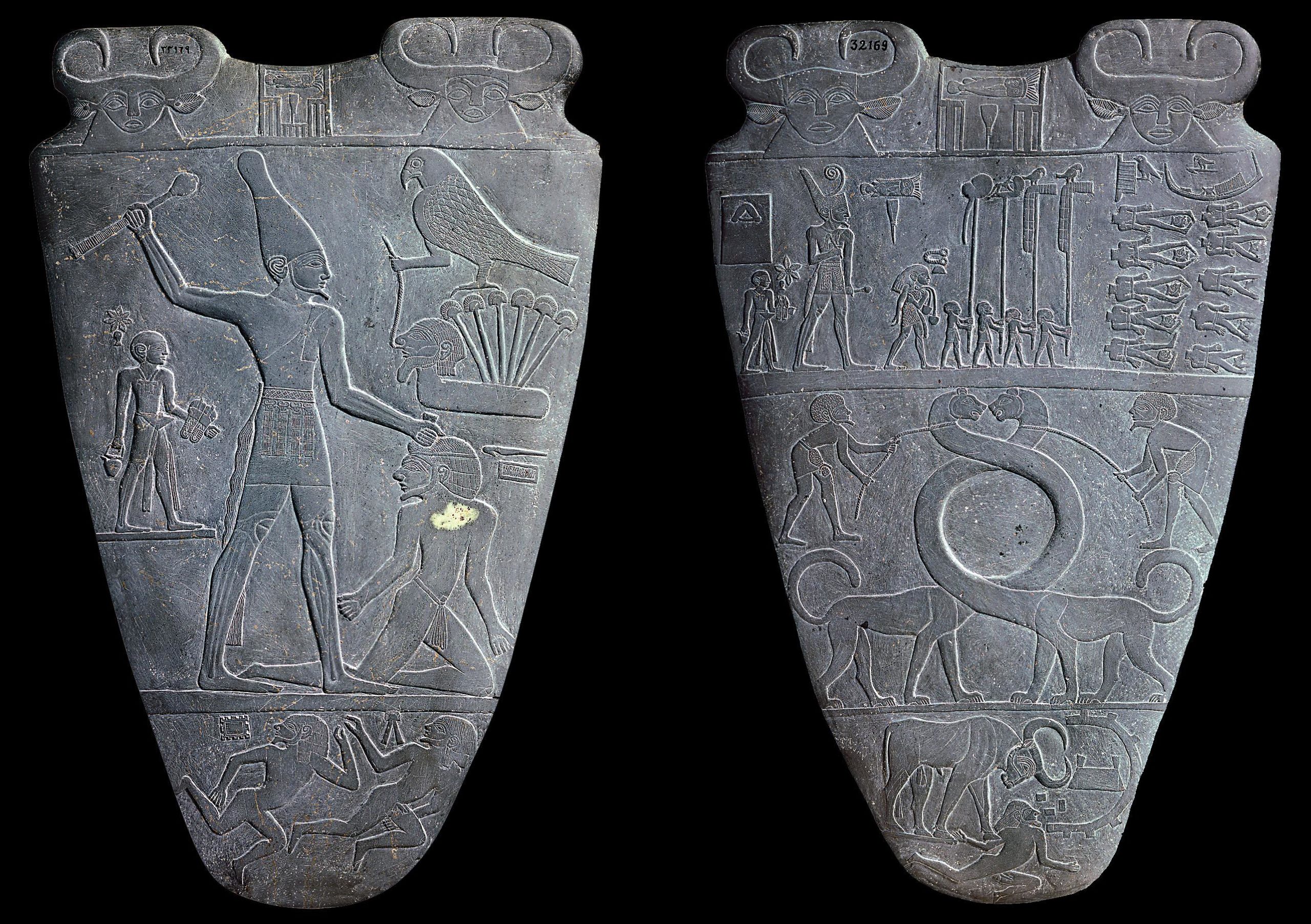
The Palette of King Narmer, Early Dynastic period
1. Crown of Upper Egypt
2. Crown of Lower Egypt
3. Horus, god of kingship
Greek sculpture shows a shift towards...
Naturalism!
What is the name of the group that defeated the Persians in the fifth century, and where was the "seat" of this group?
Delian League with its seat in Athens
True or False:
Paleolithic peoples were part of the agricultural revolution.
FALSE
Based on your knowledge from the class, what is the likely purpose of the following sculpture and which sculpture does it remind you of (name & period)
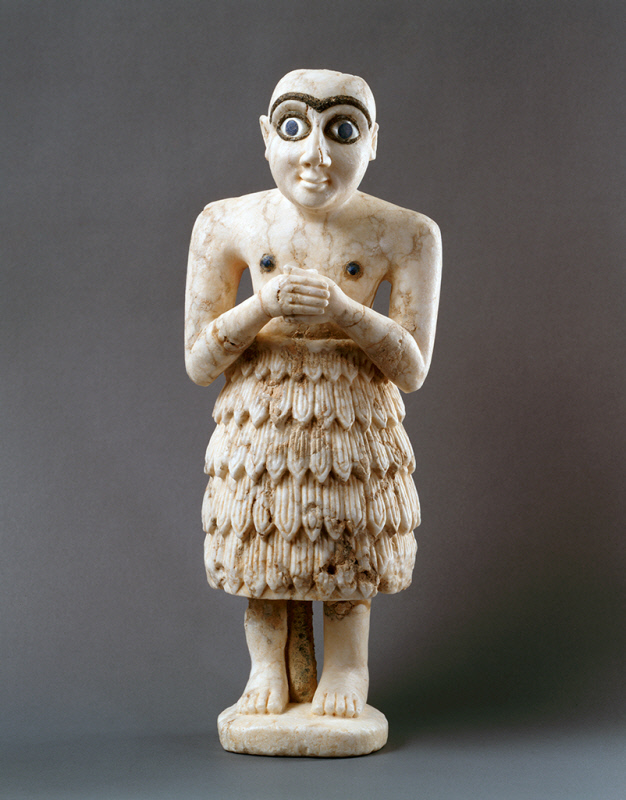
Continuous worship, very similar to the Votive Figures of Eshnunna from the Sumerian period
Name & Period
What iconography is "hidden" in this piece and why is it included?
Khafre Enthroned, Old Kingdom
Horus!

There are two sculptures that are visually inspired by a certain Egyptian period. Name one of the two and explain.
New York Kouros Kroisos Kouros
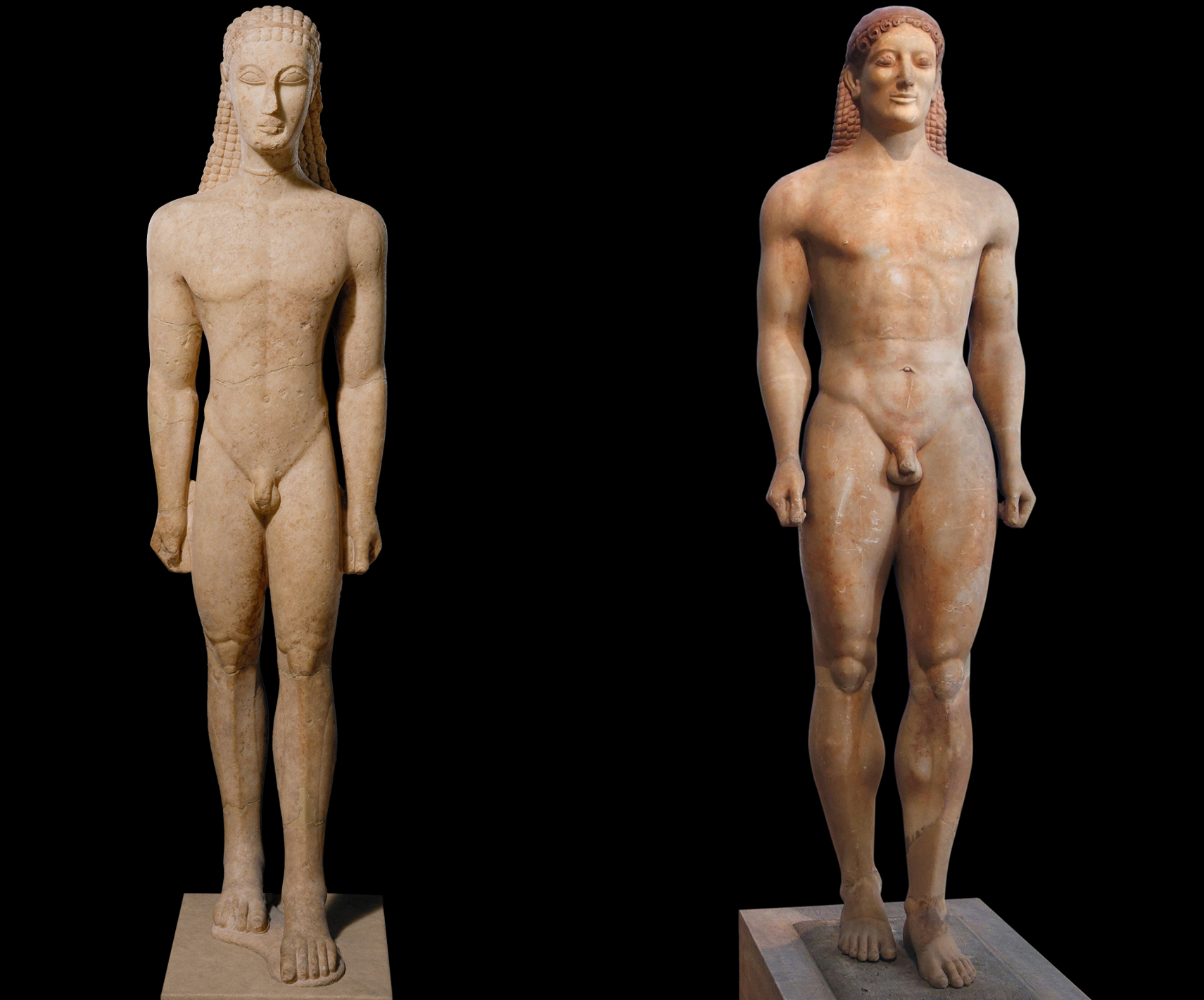 Both Archaic, both inspired by Old Kingdom styles:
Both Archaic, both inspired by Old Kingdom styles:
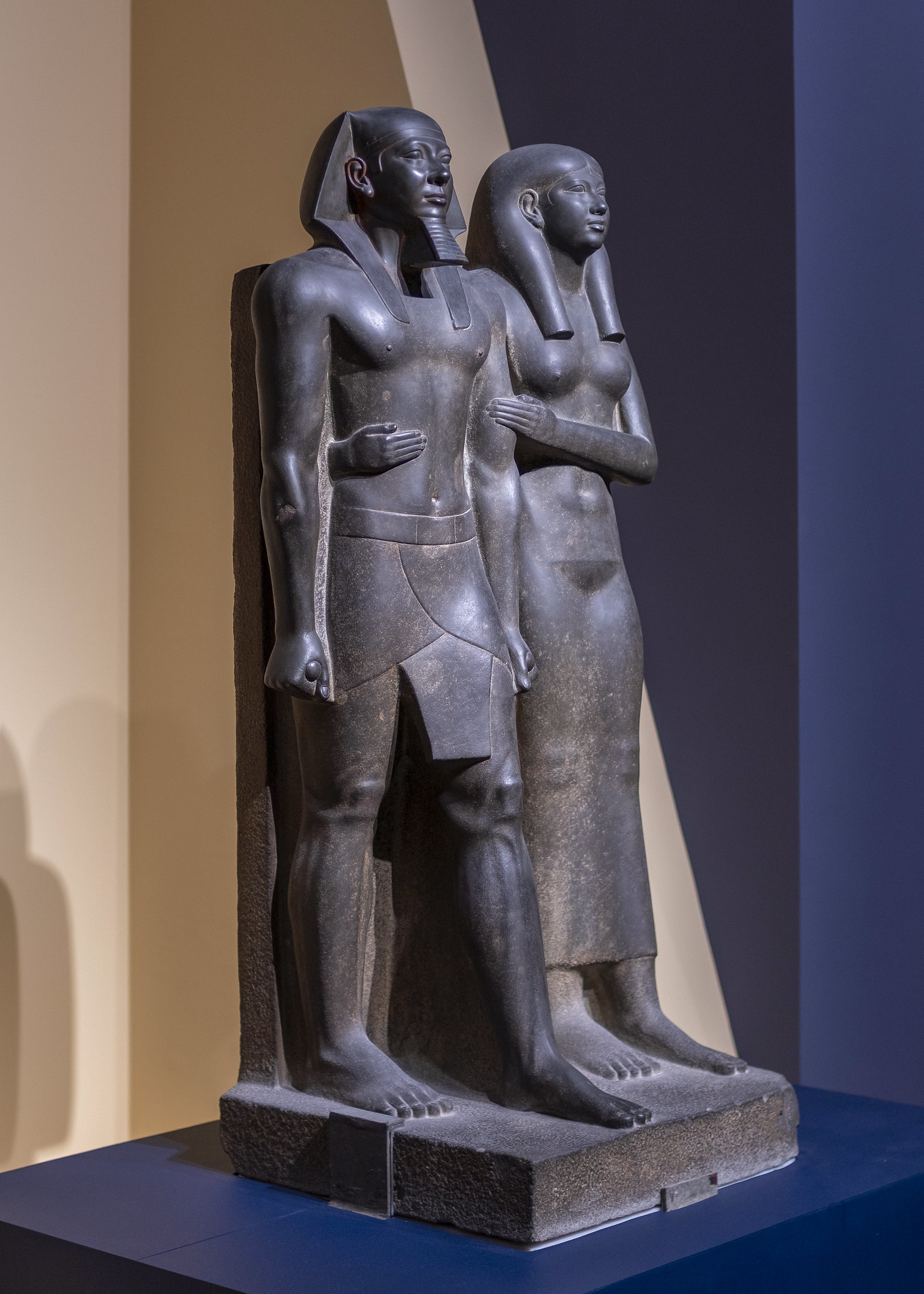
Menkaure and his Queen, Old Kingdom
Name and explain one of the two stories told in the Parthenon's pediments.
Pediments = Dedication to Athena
East Pediment: The Birth of Athena

West Pediment: How Athens was Named (competition between Athena and Poseidon)

Using your knowledge of Paleolithic peoples, what would be a reasonable interpretation of the following & which piece from class does this most resemble?
Fertility, survival, well-fed = survival of community and ability to have children
Most similar to the Venus of Willendorf
What important development(s) is/are either implicitly or explicitly represented in the following image: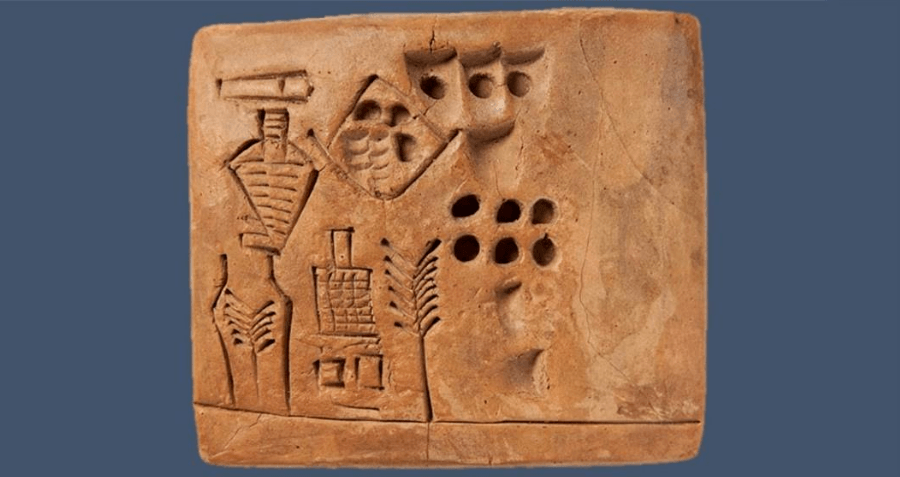
1. Agriculture
2. Sedentary lifestyle
3. Development of economy
4. Development of economic hierarchies
5. Writing systems
Based on what you've learned, what Egyptian period would you attribute this object to and why? 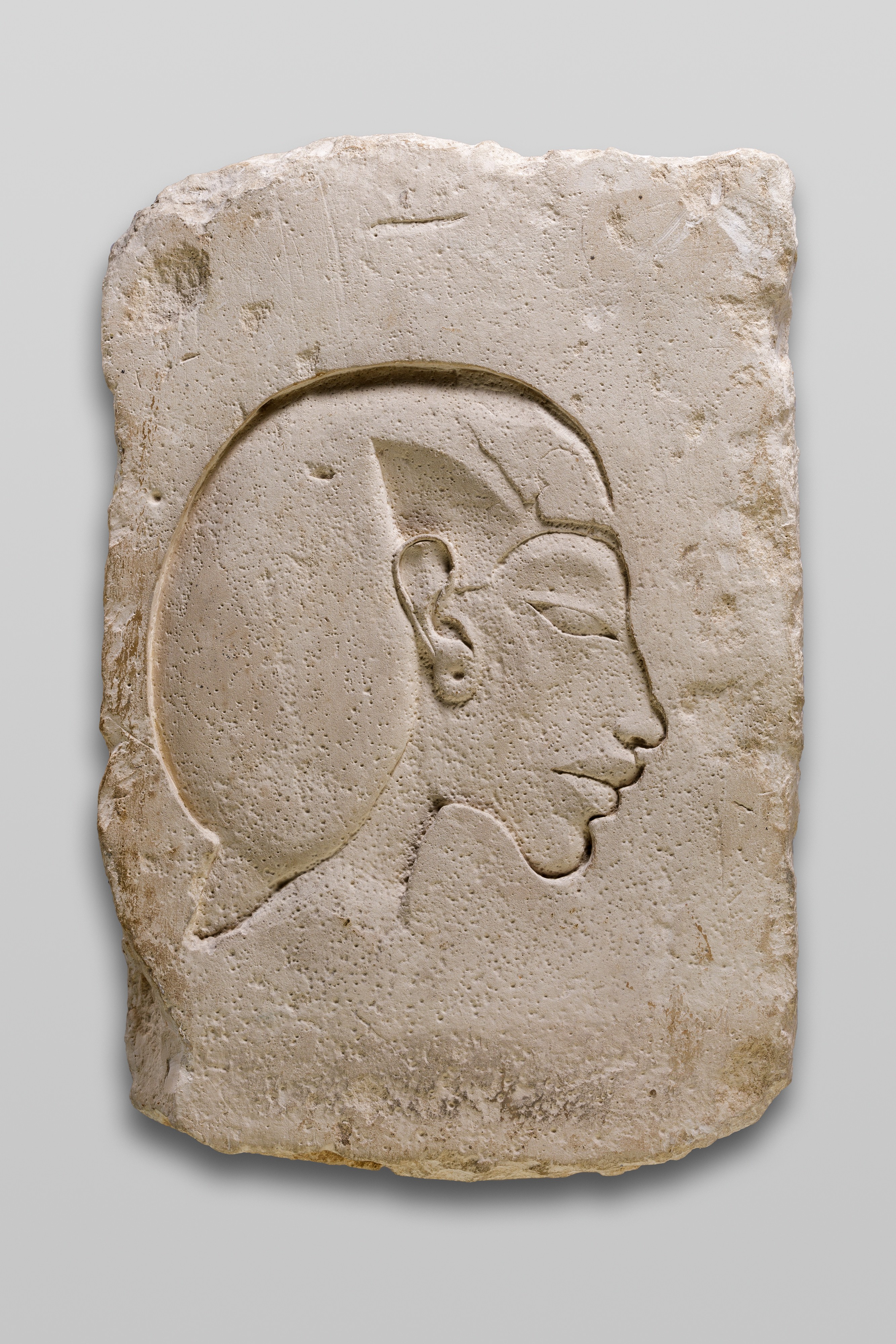
New Kingdom!
EXPLAIN
Based on what you've learned, which period best fits the sculpture in the image below and why?

Hellenistic!
There is dynamic movement, drama, story-telling
Explain the story associated with the following image and how it fits into the broader message of the metopes:

Centaurs vs Lapiths
Centaurs = rowdy, drunken "monsters" from the east
Lapiths = Greek kingdom that hosts a wedding, refuses to invite centaurs
Conflict: the centaurs crash the wedding, fighting breaks out
Conclusion: Lapiths are victorious; one of four sides of metopes depicting Greek victory, a metaphor for the recent victory over the Persians